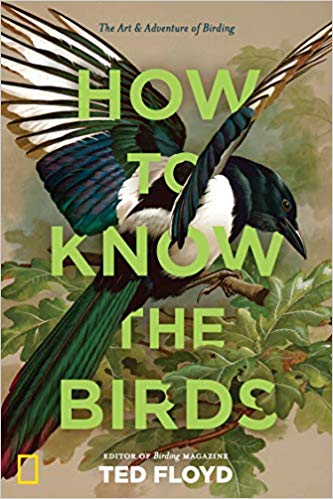We have a pesky cardinal that likes to say “hello” twice a day by attacking our windows. Every day I think, “I really should put some stickers on these windows,” and every day I forget about that thought. Mr. 3 likes to sit and watch said cardinal, and he’s filled with lots of questions about birds. In fact, everywhere we go, my budding ornithologist spots birds and asks about them. So when I was asked if I’d like to review How to Know the Birds by Ted Floyd, I said “yes” with him in mind.
While this book isn’t an identification guide (see this other post for a North American Birds identification guide), it is a good resource for families incorporating nature studies into their homeschooling routines to have on hand. How to Know the Birds will help you to delve deeper into the intricacies of birds and birdwatching and answer a lot of the questions kids come up with when observing birds. For example, the chapter using cardinals as a primary example is titled, “Sex and Gender,” and uses the male cardinal’s bright red color to discuss sexual dimorphism – where the male and female of a species appear different and then cautions against assuming that it’s always the male in a bird species that exhibits the more fanciful markings.

About How to Know the Birds
• Hardcover: 304 pages
• Publisher: National Geographic (March 12, 2019)
Become a better birder with brief portraits of 200 top North American birds. This friendly, relatable book is a celebration of the art, science, and delights of bird-watching.
How to Know the Birds introduces a new, holistic approach to bird-watching, by noting how behaviors, settings, and seasonal cycles connect with shape, song, color, gender, age distinctions, and other features traditionally used to identify species. With short essays on 200 observable species, expert author Ted Floyd guides us through a year of becoming a better birder, each species representing another useful lesson: from explaining scientific nomenclature to noting how plumage changes with age, from chronicling migration patterns to noting hatchling habits. Dozens of endearing pencil sketches accompany Floyd’s charming prose, making this book a unique blend of narrative and field guide. A pleasure for birders of all ages, this witty book promises solid lessons for the beginner and smiles of recognition for the seasoned nature lover.







